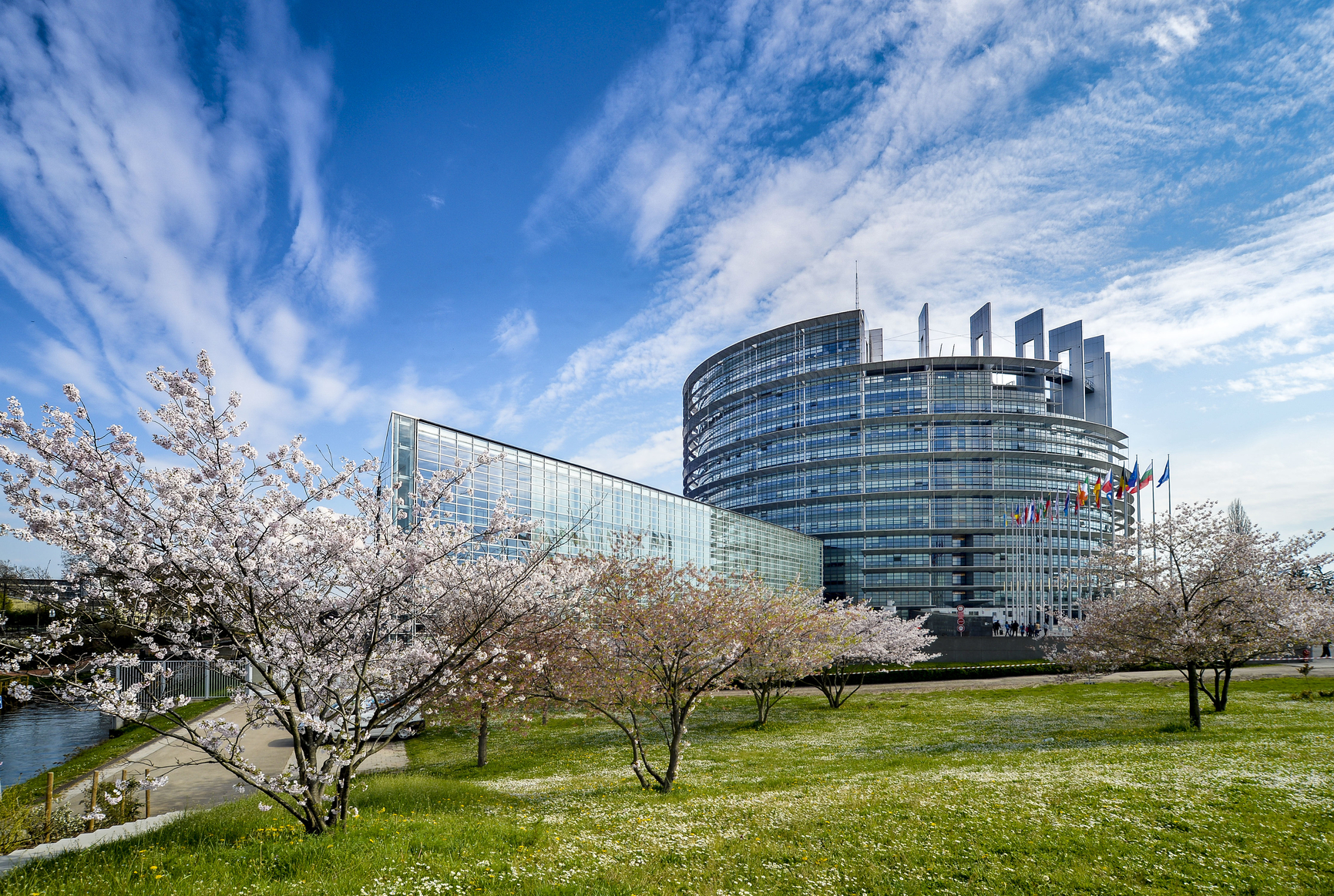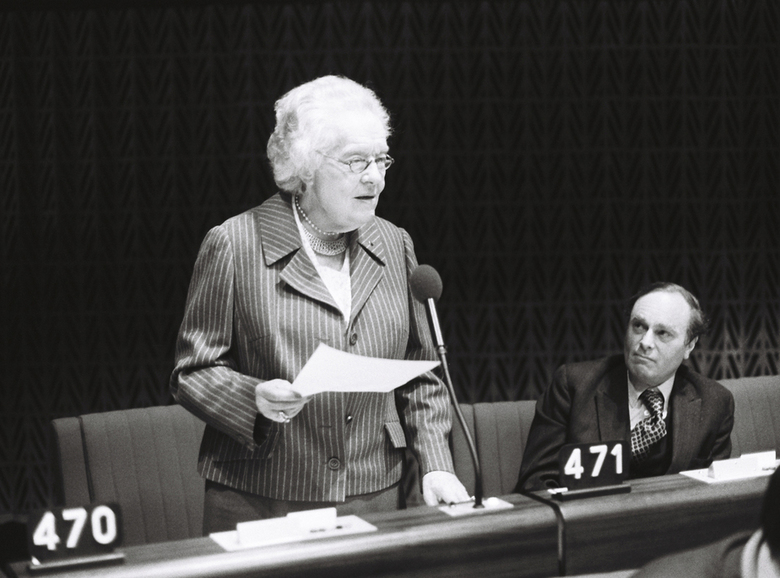A portrait of the ardent champion of women and committed European who gave her name to the building that houses the Chamber in Strasbourg
You might have asked yourself at some point: who are the people behind the names given to Parliament’s buildings?
Lots of men, but only a handful of women: nonetheless, women played a vital role ever since Parliament first came into being, which is why we chose Louise Weiss as our first subject in this series. A writer and an activist, she left a deep and indelible mark on the European landscape.
 Spring season at the EP. Cherry blossom - Louise Weiss building in Strasbourg © European Union 2016 – European Parliament; Louise Weiss building © Architecture Studio
Spring season at the EP. Cherry blossom - Louise Weiss building in Strasbourg © European Union 2016 – European Parliament; Louise Weiss building © Architecture Studio
A journalist by training
She was born into a family hailing from Alsace, at a time when women struggled to get jobs that matched their ambitions: this was a patriarchal society where women’s skills and their genuine ability to fill important posts, in any field whatsoever, received scant recognition. With a love of literature, she became a journalist, but this was only the start of a long and turbulent career.
In that job, she was involved in the launch of a new newspaper in 1918, ‘’L'Europe Nouvelle’’, which she later went on to run from 1922 to 1934. She used the newspaper as a standard-bearer for her pacifist ideas and her ideals of freedom for the central European countries that were in upheaval in the aftermath of the First World War.
Weiss formed a lasting friendship with Jean Monnet. The contacts her fellow workers formed with political, intellectual and industrial circles turned ‘L’Europe Nouvelle’ into a vibrant platform from which to spread news of the efforts being made at that time by the League of Nations to build a united Europe. In 1930 in Paris, Louise Weiss set up her ‘New School for Peace’, which ran courses and organised conferences and publications on topical international issues.
She left ‘L’Europe Nouvelle’ for a while before returning, stronger than ever and more determined to get what she wanted. Her words will probably be engraved for ever in the annals of the long fight for the cause she made her own, women’s rights: ‘I want the 750 francs per month I was promised [...] and which I’ve never been paid. A seat on the Board. The title ‘Editor’. To oversee subscriptions. The right to see the accounts’. All of this she got.
An ardent feminist, she never stopped championing those values, and what she had to say was heard and passed on.
 MEP Louise Weiss during a session in Strasbourg in March 1980.© European Communities 1980
MEP Louise Weiss during a session in Strasbourg in March 1980.© European Communities 1980
Elected in 1979
It was only years later, after the Second World War and in the early stages of what was to become the European Union, that Louise Weiss would take her seat in Parliament. She was elected as a Member of the European Parliament during the first-ever direct elections by universal suffrage, held in 1979.
The path she had carved out over the years had prompted France’s ‘Rassemblement pour la République (RPR)’ to ask her to stand on their list, knowing her fame as a staunch upholder of European Union would reflect well on them.
As the oldest Member of the House, Louise Weiss was given the honour of making the first speech in the Chamber and of presiding over the vote to choose the first President of the directly elected European Parliament – another woman, Simone Veil. A triumph for womanhood, announcing a change in traditional attitudes.
The building
The rules on how the names given to Parliament’s buildings are chosen were laid down in a Bureau decision in 1998. This said that proposed names must honour key figures who have died and who, in their time, contributed greatly either to European integration, or to defending human rights or championing the spread of European culture.
The same Bureau decision also records Parliament’s decision to give its main building in Strasbourg, hitherto known as IPE4 (Immeuble pour les parlementaires européens 4 – MEP Building 4) the name of Louise Weiss. Set beside the River Ill (the river that flows through the heart of Strasbourg), this rounded building built in a contemporary ‘studio’ style was inaugurated in 1999 in preparation for the future enlargements of the European Union that would start in 2004.
European Institution Buildings in Strasbourg © European Union 2012 – European Parliament; Louise Weiss building © Architecture Studio